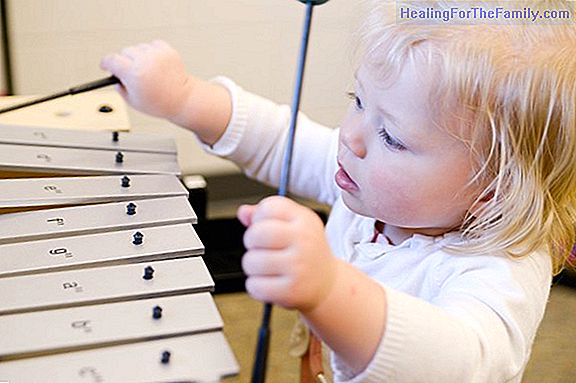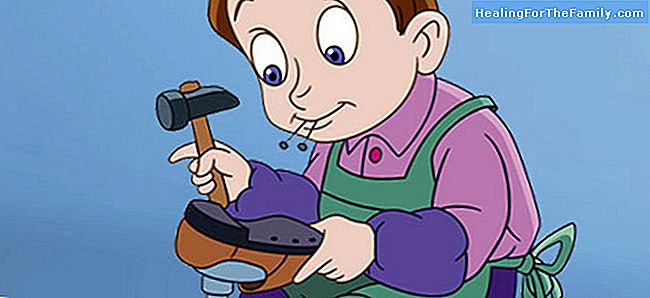Delay in the development of children's language
Children learn to speak in an evolutionary way and in stages, which correspond to their age and degree of development. Detect early un delay in the development of children's language , in the acquisition of vocabulary or in the pronunciation of phonemes is essential to start in time a treatment or t
Children learn to speak in an evolutionary way and in stages, which correspond to their age and degree of development. Detect early un delay in the development of children's language , in the acquisition of vocabulary or in the pronunciation of phonemes is essential to start in time a treatment or training that allows the child to acquire the rhythm of normal development .Ana Carballal,
psycho-pedagogue and specialist in Early Childhood, explains what is the development of child communication, and tells us in this interview what are the phases of language learning and what is considered normal in the evolution of children when they learn to talk Clues to detect a delay in the development of language
What makes us suspect that something does not work well in children's communication?

There are a series of indicatives that can be seen before the children begin to talk, that is, there is no need to talk to see that there is something in the communication that is not going well. Although they are subtle things, they are very important, something is not right when a child does not share with the parents, does not look, has no attention, needs to get the attention of their parents, has not learned to point more or less to 9 months, 9 or 10 months, which would be very important behaviors for the child to learn to speak, basically when there is no intention to communicate something and already the word, when we are in the linguistic stage, things that they indicate that something is not right, in addition to all the above, lack of intention to communicate we see that the child does not speak in a very correct way according to what he expects for his developmental age or makes very unstructured sentences without any sense or He has a very reduced vocabulary according to what is expected for his age.
How do you see a delay in the development of the language?
The delay in the child's language development consists in the late development of what is expected according to his age, his growth and his level of development. Language delay can be observed both at the level of expression and comprehension, both parties are affected although the expression is more affected than comprehension.What can indicate to us that a child has a delay in the development of the language?
An indicative in which it is necessary to pay attention to the appearance of the first words. In general, they usually appear between 12 and 18 months, but in the child with language delay they appear at 2 years, which causes all the stages of the language to appear delayed. In children with language delay, theholofrase , which consists in using a word to express an entire sentence, appears later. It also begins later to use telegraphic language, that is, to use the conjunction of two words and this telegraphic language will last for a longer time. Other indications are the use of a reduced vocabulary for what is expected, that use very simple sentences, that do not use possessive pronouns when it would be normal for them to use them ... In short, they are children who do not have the capacities to express themselves freely and then wait for ask them At the level of comprehension, they are children who have problems with spatio-temporal concepts or concepts such as colors, which has as a consequence an impact on their learning at the school level. What is normal in the development of children's communication?
There are a number of points that we can point out as normal when it comes to learning to speak and others that would not be so normal. It is normal that when children learn to talk they want to talk, to communicate, to share ... It is normal to look at the adult, to seek their attention, to be curious ... It is also normal for them to experience their phonatory organs through the sounds and Through this practice they will learn babbling. The normal thing to learn to talk is that children go through the prelinguistic stage, crying, smiling, babbling, and then a jargon go to the linguistic stage where children learn the first words, pass to holofrase, telegraphic language and they evolve to adult language.What is not normal in the development of children's communication?
It is not normal for children not to go through the previous stages or to pass, but with a significant delay in their development. Nor is it normal for children to have alterations in the way of speaking, that is, in the expression and pronunciation of words. In this case, we must also assess how is the language they use and how they use the language, that is, the function that language has for them.How can a speech therapist or a teacher in Hearing and Language help a child who has a delay in language development?
They are the specialists responsible for problems related to language and hearing. They are responsible for preventing incidents in the learning of language and are those who will intervene when one of these problems appears. When there is a child who has a delay in the language, his intervention is essential to reduce this delay and the child acquires a process of acquiring the normal language.What are the functions of the speech therapist or the teacher in Hearing and Language?
Its functions are basically three: prevent, diagnose and correct.Prevent because they are always working to prevent these problems from arising or if they arise that go no further. They work a lot with teachers to see what activities and programs they can develop in the classroom or give advice and guidelines for working in the classroom. Diagnosis because when there is a suspicion of delay, it is those who are going to evaluate which aspects are delayed and are going to elaborate a program that fits the specific child and what he needs. And finally, correction,by intervening so that the child who has a delayed development reaches a normal rhythm and evaluating the evolution of the child throughout the process. Marisol Nuevo.
Editor of Guiainfantil.com












